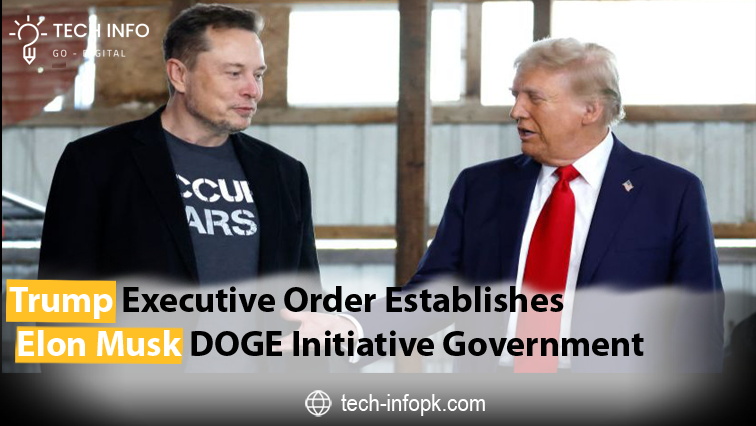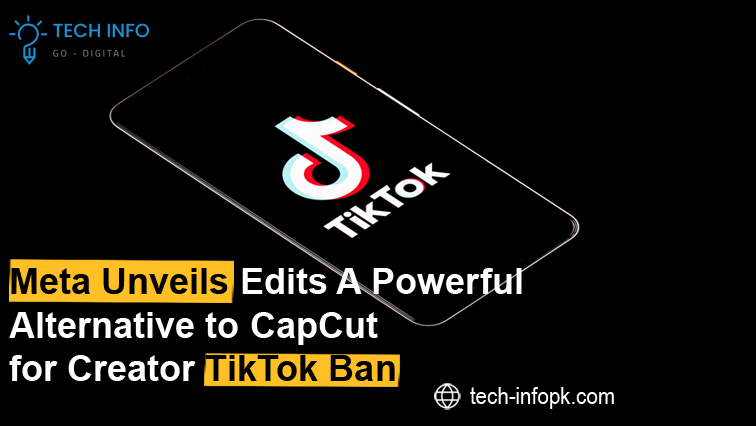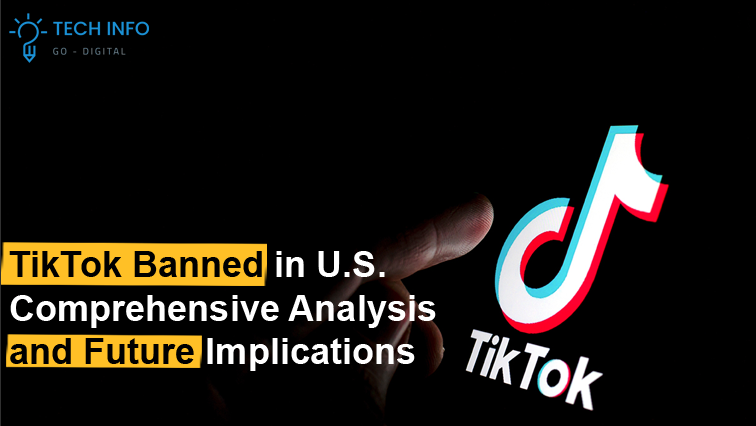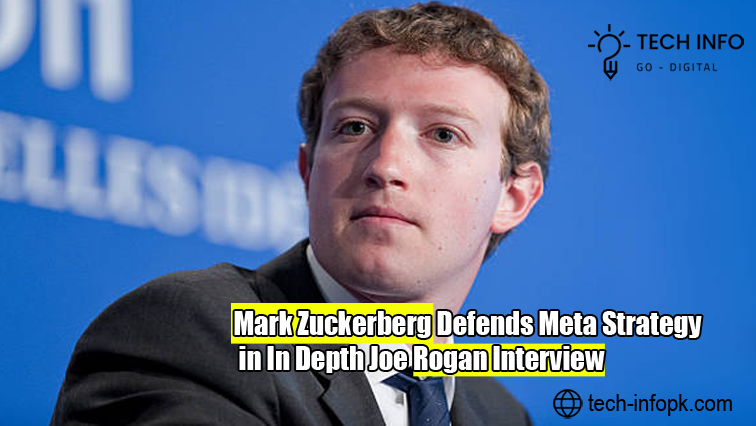President Trump Signs Executive Order to Solidify Elon Musk DOGE Commission and Launch Ambitious Government Modernization Plan

In a groundbreaking move, President Donald Trump has signed an executive order to formalize the Department of Government Efficiency (DOGE), a commission led by billionaire entrepreneur Elon Musk. The advisory body has been tasked with recommending comprehensive reforms and substantial budget cuts across federal agencies. The executive order, which renames the U.S. Digital Service (USDS) as the U.S. DOGE Service, signals a decisive step toward advancing Trump’s agenda of streamlining government operations. The Transformation of USDS to DOGE Service On Monday evening, during a signing ceremony, President Trump renamed the U.S. Digital Service—a program originally established in 2014 by President Barack Obama to modernize government technology—as the U.S. DOGE Service (USDS). Despite the identical acronym, the rebranded DOGE Service introduces a distinct mandate centered around cost-cutting and efficiency under Musk’s leadership. While the new DOGE Service is not a federal executive department, a status that would require congressional approval, it is positioned to influence agency operations significantly. According to Trump, the revamped USDS will employ around 20 staff members to spearhead these transformative efforts. Formation of DOGE Teams Across Agencies The executive order mandates federal agency heads to collaborate with the DOGE Service to create specialized “DOGE Teams” within their respective agencies. Each team must consist of at least four members, including a team lead, an engineer, an HR specialist, and an attorney. These teams will work closely with the USDS and agency leadership to implement Musk’s ambitious vision for government reform. The order also establishes a robust “software modernization” initiative aimed at upgrading government IT infrastructure and enhancing network systems. To facilitate these changes, DOGE Teams will have access to unclassified agency records and IT systems, provided such access complies with existing laws. Temporary Organization for DOGE Agenda Implementation In addition to the permanent DOGE Service, the executive order creates a temporary body—the U.S. DOGE Service Temporary Organization. This entity will focus on advancing Trump’s ambitious 18-month DOGE agenda, which is set to conclude by July 4, 2026. The organization’s termination date coincides with the final phase of Trump’s modernization plan and precedes the Ohio gubernatorial election later that year. Legal and Political Hurdles The executive order is already facing significant legal challenges. At least three federal lawsuits have been filed, claiming that the Musk-led DOGE commission violates the Federal Advisory Committee Act (FACA). This 1972 law requires advisory committees to conduct meetings publicly and maintain balanced representation. Critics argue that the closed-door approach adopted by DOGE contradicts FACA’s transparency requirements, raising concerns about accountability and inclusivity. Legal experts anticipate prolonged courtroom battles that could shape the future of the commission’s operations. DOGE’s Vision and Ambitious Goals DOGE was initially unveiled by President Trump in late 2023, with Elon Musk and entrepreneur Vivek Ramaswamy serving as co-chairs. However, Ramaswamy has since exited the initiative following reported disagreements with Musk and is rumored to be preparing a gubernatorial campaign in Ohio. Musk has proposed bold measures to reduce federal spending, claiming DOGE could save up to $2 trillion by eliminating waste, merging redundant agencies, and downsizing the federal workforce. However, Musk has recently tempered his projections, acknowledging that achieving such savings may not be feasible. Proposed Structural Changes in Federal Agencies The Wall Street Journal reports that DOGE has explored radical proposals, including abolishing the Federal Deposit Insurance Corporation (FDIC) and merging it with the Office of the Comptroller of the Currency (OCC) and the Federal Reserve. Additionally, Musk has suggested dismantling the Consumer Financial Protection Bureau (CFPB), a critical agency responsible for enforcing consumer protection laws. While these proposals are unlikely to gain widespread support, they highlight DOGE’s overarching goal of reimagining the federal government’s structure and functionality. Broader Implications for Government Efficiency President Trump’s executive order represents a significant pivot in federal governance, emphasizing technological innovation, fiscal responsibility, and efficiency. While the DOGE commission faces legal and political scrutiny, its creation underscores the administration’s commitment to reshaping government operations. As DOGE begins its work, the commission’s success—or failure—will likely have far-reaching implications for federal agencies and the public they serve. Whether it achieves its ambitious goals remains to be seen, but its impact on the national conversation about government efficiency is already evident. By enlisting visionary leadership like Elon Musk, the administration aims to transform abstract ideals into actionable reforms, promising a future of streamlined governance and enhanced public services. However, navigating the complexities of law, politics, and public opinion will be critical in determining the ultimate legacy of the U.S. DOGE Service. Conclusion The establishment of the U.S. DOGE Service under the leadership of Elon Musk marks a significant milestone in the pursuit of a leaner, more efficient federal government. With an ambitious agenda focused on reducing waste, modernizing technology, and reimagining agency structures, the initiative has the potential to redefine public administration. However, the path forward is fraught with challenges, including legal scrutiny, political opposition, and the practicalities of implementing sweeping reforms. While the success of the DOGE initiative is uncertain, its launch underscores the critical need for innovation and fiscal discipline in governance. If successful, it could serve as a blueprint for future administrations to harness private-sector expertise in addressing public-sector inefficiencies. Ultimately, the initiative’s legacy will depend on its ability to balance visionary goals with pragmatic execution, fostering a government that is both responsive and resilient in the face of evolving demands.
Meta Unveils Edits A Powerful Alternative to CapCut for Creators Amid TikTok Ban

In a strategic response to the removal of ByteDance’s video editing app, CapCut, from the Apple App Store and Google Play Store following the TikTok ban, Meta has announced the launch of a new video editing application called Edits. The announcement, made by Instagram head Adam Mosseri via Threads, signifies Meta’s continued commitment to equipping creators with innovative tools to thrive in an evolving digital landscape. Launch Details and Platform Availability According to Mosseri, Edits will debut next month, initially on iOS, with an Android version set to follow soon after. The app is currently in the beta testing phase, with Meta collaborating with select creators to gather feedback and refine the user experience. This phased launch approach reflects Meta’s dedication to ensuring the app is both functional and tailored to the needs of its primary audience—video creators. “Today, we’re unveiling a new app called Edits for those passionate about creating videos on their phones. There’s a lot happening right now, but our role is to provide creators with the best possible tools,” Mosseri wrote in his post on Threads, reinforcing Meta’s proactive stance in addressing creator needs. Key Features of Edits The Edits app is packed with a suite of advanced features designed to enhance creativity and streamline video production. These include: Mosseri emphasized that while the app offers powerful tools, it is “more for creators than casual video makers,” aiming to meet the demands of professional content creators rather than occasional users. Meta’s Market-Savvy Response This move aligns with Meta’s long-standing strategy of capitalizing on gaps in the market. The launch of Instagram Reels following TikTok’s ban in India in 2020 and the introduction of Threads as a rival to text-based social platforms like X (formerly Twitter) highlight Meta’s agility in responding to market disruptions. The removal of CapCut has left a significant void in the market for video editing tools, especially for creators dependent on intuitive, mobile-friendly apps. While CapCut’s fate remains uncertain, its absence presents an opportunity for Edits to emerge as a leading alternative. Even if CapCut is reinstated, the uncertainty surrounding its availability could drive users to explore and potentially adopt Meta’s new offering. Competitive Landscape and Creator Focus Meta’s entry into the video editing space comes amid increasing competition. Earlier this month, Captions, an a16z-backed video editing app, transitioned to a freemium model to attract users and challenge CapCut’s dominance. With Edits, Meta aims to differentiate itself by providing an all-in-one tool tailored to creators who value efficiency, creativity, and seamless integration with Instagram’s platform. A Vision for the Creator Economy By launching Edits, Meta reaffirms its commitment to empowering creators in a rapidly evolving digital economy. As Mosseri aptly noted, the app is designed not only to meet the immediate needs of creators but also to inspire innovation in content creation. In an era where creators are increasingly seeking robust and reliable tools, Edits could solidify Meta’s position as a key player in the creative technology sector. Whether Meta can successfully capture the momentum left by CapCut’s absence remains to be seen, but the company’s proactive approach and comprehensive feature set indicate a promising start. Conclusion The launch of Edits underscores Meta’s ability to adapt to market shifts and its dedication to the creator economy. By offering a platform that combines advanced editing tools with seamless integration and analytics, Meta positions itself as a reliable ally for creators navigating an uncertain landscape. With Edits, the company aims not only to fill the gap left by Cap Cut but also to redefine the standards for mobile video editing.
TikTok Vanishes from U.S. Amid Federal Ban A Comprehensive Analysis of the Ban, Backlash, and Future Prospects

The highly popular short-form video app TikTok has been officially banned in the United States, going dark for millions of American users in compliance with a recently enacted federal law. The abrupt disappearance marks a significant turning point in the ongoing debate over data security, international politics, and the influence of social media platforms. TikTok Officially Inaccessible in the U.S. Late Friday evening, TikTok users in the U.S. began encountering a stark message when attempting to access the app:“Sorry, TikTok isn’t available right now. A law banning TikTok has been enacted in the U.S. Unfortunately, that means you can’t use TikTok for now.” By Saturday night, TikTok had also disappeared from the Apple App Store and Google Play Store, making it unavailable for download or updates. While the ban appears to be definitive for the time being, TikTok hinted at a potential resolution. The message to users referenced statements from President-elect Donald Trump, suggesting that a solution to reinstate the app may be in the works once he assumes office. The company urged users to “stay tuned” for further updates. The Legislation Behind the Ban The federal ban on TikTok stems from bipartisan legislation passed earlier this year, which mandates TikTok’s Chinese parent company, ByteDance, to either divest from the app or face a prohibition in the U.S. The legislation was driven by concerns that TikTok could enable Chinese government surveillance or influence U.S. citizens. President Joe Biden signed the bill into law swiftly, reflecting the gravity of bipartisan security concerns. Although efforts to force ByteDance’s divestment began under Trump’s previous administration, the timeline for enforcement has been accelerated. Biden’s administration, however, has refrained from taking further action, leaving the responsibility for the ban’s implementation to the incoming Trump administration. Reactions and Implications of the Ban TikTok had warned earlier in the week that it would be forced to go dark if the Biden administration did not provide a clear assurance that the ban would not be enforced. Despite these warnings, Deputy Attorney General Lisa Monaco and White House Press Secretary Karine Jean-Pierre both clarified that enforcement of the law would fall under the jurisdiction of the next administration, which begins Monday. In response, TikTok deemed the lack of a “definitive statement” insufficient for its service providers to continue listing or hosting the app, resulting in the app’s abrupt disappearance. Jean-Pierre criticized TikTok’s decision, labeling it as “a stunt” and emphasizing there was no immediate necessity for such actions. For now, TikTok remains inaccessible, leaving millions of U.S.-based users grappling with the void left by the app’s absence. The Role of Trump’s Incoming Administration President-elect Donald Trump has taken a more conciliatory tone in recent weeks, suggesting he plans to negotiate a resolution. During an interview with NBC News, Trump indicated that his administration would likely grant TikTok a 90-day extension, providing ByteDance with additional time to explore potential solutions, including a sale to a U.S.-based entity. Trump described the 90-day reprieve as “appropriate,” noting the complex and significant nature of the situation. ByteDance has expressed optimism about its chances of reaching a resolution, though it has repeatedly asserted it is not interested in selling TikTok. Nevertheless, speculation around potential buyers continues to grow, with several high-profile figures and companies showing interest in acquiring TikTok’s U.S. operations. Alternative Platforms See a Surge As TikTok grapples with its uncertain future, alternative platforms have experienced a surge in activity. Chinese-owned apps like Red Note and Lemon8 have attracted a wave of new users searching for replacements to fill the gap left by TikTok. These platforms, however, face their own challenges in terms of functionality, user base, and monetization. What’s Next for TikTok? While TikTok’s current ban represents a significant disruption, its long-term fate remains unclear. Trump’s administration has indicated a willingness to engage in negotiations, opening the door for a possible resolution that could see TikTok return to U.S. users. This could involve ByteDance making significant concessions, such as selling TikTok to an American company or implementing stringent measures to ensure data privacy and security. Meanwhile, the ban underscores broader tensions between the U.S. and China over technology and national security, with TikTok serving as a focal point in this geopolitical struggle. The resolution of TikTok’s status will undoubtedly have far-reaching implications for other Chinese-owned apps operating in the U.S. Conclusion The disappearance of TikTok from the U.S. market is a landmark moment, illustrating the growing intersection of technology, politics, and international relations. While the app’s users face an indefinite suspension, the outcome of ongoing negotiations and the policies of the incoming administration will determine whether TikTok makes a triumphant return or becomes a casualty of the escalating U.S.-China tech rivalry. As millions of users await clarity, the saga of TikTok in America is far from over.
Canoo Electric Vehicle Startup Shutters Operations Amid Bankruptcy and Strategic Failures

Introduction The electric vehicle (EV) industry continues to witness turbulence, as Canoo, a seven-year-old EV startup, officially declared bankruptcy under Chapter 7 proceedings in the Delaware Bankruptcy Court. The announcement, made late Friday, revealed that the company will cease operations immediately, liquidating its assets to address mounting liabilities. Despite promising beginnings and ambitious projects, Canoo’s journey has been fraught with financial hurdles, executive instability, and shifting strategies, culminating in its sudden demise. Failed Funding Attempts and Insolvency Canoo’s inability to secure much-needed capital proved to be the tipping point in its downward spiral. The company disclosed that its discussions with international investors failed to yield results. Moreover, its efforts to procure funding from the U.S. Department of Energy’s Loan Program Office also fell through, marking a significant blow to its survival strategy. In its bankruptcy filings, Canoo reported debts to hundreds of creditors and total liabilities exceeding $164 million. With assets valued at only $126 million, the financial disparity underscored the unsustainable nature of its operations. By mid-November, the company’s cash reserves had dwindled to a mere $700,000, a figure that starkly highlighted its precarious financial state. Workforce Reductions and Idled Facilities The bankruptcy announcement follows recent developments that foreshadowed the company’s collapse. Canoo furloughed its remaining workforce and halted activities at its Oklahoma factory just weeks before filing for insolvency. The company’s inability to deliver its electric vans to prospective customers further exacerbated its challenges, leading to the loss of market confidence and partnerships. The SPAC Route A Double-Edged Sword Canoo’s journey to becoming a public company began with its merger with Hennessy Capital Acquisition Corp., a special purpose acquisition company (SPAC), in December 2020. While the SPAC route allowed the startup to raise $600 million, it set the stage for future struggles. The company faced challenges similar to other SPAC-backed EV startups like Electric Last Mile Solutions, Lordstown Motors, and Proterra, all of which have also faced financial difficulties or filed for bankruptcy. Despite initial promise, Canoo’s production of electric vans was limited, with only a small number of units reaching partners like NASA, the Department of Defense, and the United States Postal Service. Even high-profile agreements, such as Walmart’s non-binding commitment to purchase up to 10,000 vehicles, failed to materialize into substantial revenue Leadership Instability and Strategic Missteps Canoo’s leadership underwent significant upheaval over the years, further destabilizing the company. After its founding in 2017 by a group of executives from Faraday Future, the startup changed its name from Evelozcity to Canoo and pursued an innovative modular EV platform. However, leadership transitions and shifts in strategic focus hindered its progress. Tony Aquila, who became chairman and CEO after investing in Canoo, steered the company toward targeting commercial fleets rather than individual consumers. Under his leadership, Canoo frequently revised its manufacturing and operational plans, including attempts to establish multiple facilities in Oklahoma. Yet, these efforts failed to generate the stability and growth the company desperately needed. Aquila’s financial firm played a controversial role in Canoo’s final days, providing short-term loans to sustain operations. However, these loans were secured against the company’s assets, raising questions about conflicts of interest. Additionally, regulatory filings revealed payments to Aquila’s firm for the use of a corporate jet and office space, further straining Canoo’s limited resources. Industry-Wide Implications Canoo’s bankruptcy highlights broader challenges faced by the EV sector, particularly among startups navigating a competitive and capital-intensive market. The company’s struggles mirror those of other SPAC-backed firms, underscoring the risks associated with rapid scaling and insufficient operational stability. The End of the Road Canoo’s downfall became increasingly apparent in recent weeks. Observers noted the removal of company signage outside its Texas office, and furloughed employees reported receiving termination notices. Even customers who had placed deposits for future vehicles began receiving refunds, signaling the company’s impending closure. With its innovative ideas and promising collaborations now a thing of the past, Canoo’s legacy serves as a cautionary tale for the EV industry. The company’s bankruptcy filing marks the end of a turbulent journey, leaving behind lessons in strategic misalignment, financial mismanagement, and the challenges of navigating a nascent industry. Conclusion Canoo’s rise and fall underscore the volatility of the EV market and the challenges startups face in scaling operations and securing long-term financial stability. Despite its ambitious vision and initial promise, Canoo’s inability to adapt to market realities and maintain operational consistency led to its ultimate demise. As the industry continues to evolve, Canoo’s story serves as a poignant reminder of the importance of robust planning, sustainable strategies, and prudent financial management. For the EV sector, the closure of Canoo marks a somber milestone, yet it also opens the door for reflection and renewed innovation in the quest for sustainable transportation solutions.
Instagram Reels Introduces Advanced Interactive Features Amid U.S. TikTok Ban, Redefining Short-Form Video Engagement

Introduction A Timely Strategic Update In a significant development, Instagram has launched a series of updates to its popular video-sharing platform, Reels, aligning perfectly with the Supreme Court’s decision to uphold the TikTok ban in the United States, effective January 19. These updates, designed to enhance user engagement and content discovery, underscore Meta’s commitment to staying ahead in the highly competitive short-form video content market. The new features mark a pivotal step in Meta’s strategy to capture displaced TikTok users and creators, ensuring Instagram remains the go-to platform for creativity, interaction, and monetization. The Impact of TikTok U.S. Ban on Social Media Landscape The announcement of TikTok impending ban has sent shockwaves through the creator community, particularly among those who rely heavily on the platform for income. While alternative platforms such as Red Note have emerged, the challenges of monetizing content on a platform primarily catering to Chinese users present significant hurdles for U.S.-based creators. This disruption has opened a lucrative window of opportunity for Meta, which is positioning Instagram Reels as the premier alternative, offering creators a robust ecosystem for content sharing and monetization. Instagram Reels A Strategic Pivot to Capture Displaced TikTok Users Meta’s timely introduction of interactive features for Instagram Reels is a calculated move to attract TikTok’s massive user base. By providing enhanced tools for discovery and interaction, Reels is poised to cater to the needs of creators and audiences alike. The platform’s ability to facilitate meaningful connections and offer monetization avenues positions it as a viable and appealing replacement for TikTok. New Reels Features Revolutionizing Engagement and Interaction One of the standout updates is a new button located in the top-right corner of the Reels tab. This intuitive feature allows users to easily see the reels their friends and followers have interacted with. Each interaction—whether a like or comment—is represented by profile pictures accompanied by a heart or conversation bubble icon, streamlining the discovery of popular and engaging content. Personalized Reply Bar for Seamless Interaction Another significant addition is the introduction of a “reply bar” at the bottom of reels. This innovative tool enables users to respond directly to interactions from their followers. For instance, when a friend likes or comments on a reel, their profile picture and engagement icon appear as prompts, encouraging users to reply. Replies are sent as direct messages, fostering a more personalized and dynamic user experience. Meta’s Vision Dominating the Short-Form Video Market Meta’s proactive approach reflects its ambition to dominate the short-form video space. By prioritizing user engagement and interactivity, Instagram Reels is not merely filling the void left by TikTok but setting new standards for social media platforms. The emphasis on fostering connections and providing creators with comprehensive tools for monetization demonstrates Meta’s commitment to staying ahead in the evolving social media landscape. Opportunities for Content Creators For content creators, the updates to Instagram Reels offer a lifeline amid the uncertainty surrounding TikTok. With its vast user base and established infrastructure, Instagram provides creators with a platform that supports creative freedom and offers lucrative opportunities for brand partnerships and sponsorships. The new features further enhance the platform’s appeal by encouraging direct engagement between creators and their audiences, strengthening community ties and boosting visibilit Global Implications of Instagram’s Strategic Updates While the initial rollout of these features is limited to U.S. users, their impact is likely to resonate globally. The success of these tools could serve as a blueprint for future innovations in other markets, solidifying Instagram’s position as a global leader in social media. As the short-form video content market continues to grow, Meta’s ability to adapt and innovate will play a crucial role in shaping its trajectory. Conclusion Instagram’s latest updates to Reels come at a critical juncture, marking the dawn of a new era in the short-form video content space. By introducing features that prioritize interactivity and user engagement, Meta is not just responding to TikTok’s U.S. ban but proactively shaping the future of social media. These updates underscore Meta’s strategic foresight and commitment to innovation, ensuring Instagram remains a dominant force in the digital landscape. As creators and users migrate from TikTok, Instagram Reels is well-positioned to meet their needs with enhanced tools and opportunities for growth. The platform’s ability to foster meaningful connections, support creative expression, and offer monetization pathways sets it apart as a leader in the industry. With these advancements, Meta has not only addressed current challenges but also laid the foundation for sustained success in the ever-evolving world of social media.
Microsoft Core AI Division Pioneering Developer Centric AI Innovations for the Future of Intelligent Applications

Microsoft has unveiled a groundbreaking internal engineering division, named Core AI Platform and Tools, designed to accelerate advancements in AI infrastructure and software development. This move reinforces the company’s commitment to maintaining its leadership in artificial intelligence by prioritizing cutting-edge innovation and equipping developers with robust tools to create transformative applications. At the helm of this newly-formed division is Jay Parikh, a seasoned technology leader with a stellar track record in engineering and infrastructure. Parikh, who previously served as the Vice President and Global Head of Engineering at Meta, will report directly to Microsoft CEO Satya Nadella. With a mandate to oversee teams dedicated to AI platforms and developer resources, Parikh’s leadership is expected to bring a renewed focus on building scalable and efficient AI systems within Microsoft. A Leader with Proven Expertise Jay Parikh’s extensive experience in the tech industry positions him well for his role at Microsoft. At Meta, he led major initiatives in technical infrastructure and data center innovation, playing a pivotal role in ensuring the company’s systems could support its vast user base. Following his tenure at Meta, Parikh served as CEO of cloud security startup Lacework, where he further honed his skills in managing high-performance engineering teams and developing scalable solutions. Parikh joined Microsoft in October 2024, bringing a wealth of expertise to the organization. Under his leadership, the Core AI division is set to integrate teams from Microsoft’s Developer Division (Dev Div) and AI Platform teams, alongside select employees from the Office of the CTO. This integration signifies a strategic realignment within Microsoft, designed to consolidate its AI efforts and ensure the company remains at the forefront of AI innovation. Core AI Strategic Initiative The establishment of the Core AI division represents more than just a restructuring; it reflects Microsoft’s determination to prioritize artificial intelligence as a cornerstone of its future strategy. By bringing together key engineering groups under a unified banner, the company aims to streamline the development of AI-driven infrastructure and tools. An internal memo shared by CEO Satya Nadella further underscores this vision. Nadella emphasized that the company’s focus for the coming year will be on developing “model-forward” applications. These applications aim to revolutionize traditional software categories by leveraging AI to deliver more intelligent, efficient, and adaptable solutions. This vision aligns with the broader trend of integrating AI deeply into software to enable capabilities that were previously unimaginable. A Unified Approach to AI Innovation The Core AI division’s mission is clear: to foster collaboration between developer teams and AI specialists, ensuring that Microsoft’s tools and platforms remain state-of-the-art. By centralizing these efforts, the company seeks to create a synergistic environment where ideas can flourish and breakthroughs in AI can be seamlessly translated into practical applications for developers worldwide. This move also highlights Microsoft’s strategic foresight in recognizing the growing importance of AI in shaping the future of technology. By focusing on empowering developers with advanced AI capabilities, Microsoft is positioning itself as an enabler of innovation, helping businesses and individuals unlock the full potential of artificial intelligence. The Road Ahead Microsoft’s decision to form the Core AI division underscores its commitment to remaining at the cutting edge of AI research and development. With Jay Parikh’s leadership, the company is well-positioned to drive innovation in AI infrastructure and developer tools, setting new benchmarks for the industry. As the technology landscape continues to evolve, Microsoft’s focus on “model-forward” applications signals a paradigm shift in how software is developed and deployed. By integrating AI deeply into its platforms, Microsoft aims to empower developers to create applications that are not only more powerful but also more adaptive to the needs of users. In the coming months, all eyes will be on the Core AI division as it embarks on its mission to transform the AI landscape. With a unified team, a visionary leader, and a clear focus on innovation, Microsoft is poised to shape the future of artificial intelligence in profound and impactful ways. Conclusion The formation of Microsoft’s Core AI — Platform and Tools division signifies a pivotal moment in the company’s evolution, reinforcing its position as a leader in the AI and software development landscape. By uniting key teams under one innovative umbrella, Microsoft is poised to streamline the creation of cutting-edge AI tools and infrastructure, paving the way for next-generation applications that redefine industry standards. Under the strategic leadership of Jay Parikh, a proven expert in large-scale engineering and technical infrastructure, the Core AI division is expected to foster a culture of collaboration and innovation. This initiative not only reflects Microsoft’s commitment to empowering developers but also positions the company as a visionary force in shaping the future of artificial intelligence. The integration of AI into Microsoft’s platforms will enable developers worldwide to create applications with unprecedented intelligence, efficiency, and adaptability. Satya Nadella’s emphasis on “model-forward” applications highlights a clear and ambitious direction for the company, ensuring that Microsoft remains at the forefront of technological advancement. These AI-driven applications promise to revolutionize traditional software paradigms by offering solutions that are more intuitive, reliable, and tailored to user needs. As the global demand for AI-enabled technologies continues to grow, Microsoft’s Core AI division will play a critical role in driving this transformation. The division’s focus on scalable, developer-focused innovation will not only strengthen Microsoft’s market position but also contribute to the broader advancement of AI capabilities worldwide. In an era where technology is rapidly evolving, Microsoft’s proactive approach underscores its dedication to leading the charge in AI innovation. The Core AI division represents more than just a restructuring — it is a testament to Microsoft’s vision of a future where artificial intelligence is seamlessly integrated into the fabric of software development, empowering developers and reshaping industries. As this transformative journey unfolds, Microsoft’s commitment to excellence, innovation, and empowerment will undoubtedly leave a lasting impact on the global tech ecosystem.
Groww India Leading Trading App Prepares for a IPO with a Target of $6–$8 Billion

Groww, India’s largest retail stockbroker and a leader in the fintech space, is gearing up for its highly anticipated Initial Public Offering (IPO) within the next 10–12 months. According to sources familiar with the development, the Bengaluru-based company is targeting a valuation between $6 billion and $8 billion, a potential game-changer for the nation’s burgeoning fintech sector. If successful, this IPO would mark a significant milestone as the first public listing by a digital-era trading platform in India. A Landmark Valuation Target The projected valuation of $6–$8 billion represents a remarkable leap from Groww previous valuation of $3 billion during its last funding round in October 2021. While these estimates may still be subject to market dynamics, the company’s rapid growth trajectory has positioned it as a frontrunner in India’s crowded retail investing market. Groww’s backers include prominent global investors such as Peak XV Partners, Tiger Global, and Alkeon. The fintech startup has reportedly initiated discussions with leading investment banks to finalize its IPO roadmap. It is expected to soon select key advisors to guide the process, underscoring its commitment to a successful and transformative public debut. Strategic Domicile Shift and Expanded Offerings As part of its IPO readiness, Groww relocated its domicile to India from the U.S. last year, aligning its corporate structure with domestic regulatory requirements. This move signifies the startup’s dedication to navigating the Indian market landscape and its regulatory frameworks effectively. In addition to stock trading, Groww offers a diversified portfolio of services, including investments in mutual funds and seamless UPI-based payment transactions. This broad service spectrum has enabled the platform to cater to the evolving financial needs of a tech-savvy generation. Outpacing Competitors in a Thriving Market Groww has firmly established itself as a market leader, outperforming rivals in India’s competitive retail investment ecosystem. According to data from the National Stock Exchange, the platform boasted 13.2 million active users as of December, significantly outpacing its closest competitor, Zerodha, which had 8.1 million active users. The platform’s robust growth is further evidenced by its ability to onboard new users at an accelerated pace, adding 325,000 to 550,000 users each month—more than double the rate of its competitors. This rapid expansion underscores Groww appeal to India’s growing pool of retail investors. India’s IPO Landscape A Global Spotlight India continues to shine as a global hotspot for tech-driven IPOs, with seven technology startups going public in 2024 among 13 overall startup listings. The country witnessed the largest global tech IPO of the year with Swiggy’s $1.35 billion listing, setting a precedent for other startups eyeing public markets. Looking ahead, over 20 Indian startups, including Zetwerk, Table Space, PayU (owned by Prosus), and PharmEasy, are expected to make their public market debuts in 2025. This wave of IPOs highlights the maturing Indian startup ecosystem and its increasing appeal to both domestic and international investors. Policy Certainty and Domestic Capital Key Drivers India’s IPO surge can be attributed to its stable policy environment and growing domestic capital base. According to Abhinav Bharti, JPMorgan’s Head of Equity Capital Markets in India, the country’s political stability and consistent policies provide a reliable framework for businesses and investors alike. India’s market capitalization has surged to $5.3 trillion since 2019, while daily trading volumes have tripled, reaching $15 billion. Bharti emphasized, “No other country globally offers this level of political certainty combined with policy consistency. While one can debate policy decisions, the fact remains that they are steadfast in their direction.” A New Chapter for Indian Fintech Groww impending IPO not only signifies its own evolution but also highlights the strength and potential of India’s fintech industry. With its innovative services, user-centric approach, and proven market leadership, Groww is poised to make a significant impact on the public markets, setting a benchmark for digital-era startups in India and beyond. The forthcoming listing will undoubtedly serve as a litmus test for investor confidence in India’s rapidly evolving tech and financial sectors, potentially inspiring other fintech players to follow suit and embrace public markets as a growth pathway. Conclusion Groww’s upcoming IPO marks a pivotal moment not only for the company but also for India’s fintech sector and its broader startup ecosystem. As the nation’s largest retail stockbroker, Groww’s rapid ascent to market leadership underscores the increasing appetite among Indian consumers for accessible and user-friendly financial tools. With its innovative offerings in stock trading, mutual funds, and UPI transactions, Groww has positioned itself as a transformative force in the democratization of investing for millions of Indians. The projected valuation of $6–$8 billion reflects the company’s robust growth and market dominance, achieved through strategic decision-making, product innovation, and a keen understanding of its audience’s needs. By consistently outpacing its competitors, including established players like Zerodha, Groww has demonstrated a unique ability to capture and sustain user engagement in a highly competitive landscape. India’s IPO surge has highlighted the maturity of its startup ecosystem, which now attracts both domestic and international investors eager to capitalize on the country’s burgeoning tech industry. With a stable policy environment and a growing capital market, India offers a fertile ground for startups like Groww to thrive and scale. The move to relocate its domicile from the U.S. back to India further signals Groww’s confidence in the local regulatory landscape and its readiness to anchor itself firmly within the domestic market. Beyond its financial aspirations, Groww’s IPO holds broader implications for the Indian fintech industry. It serves as a testament to the sector’s resilience and adaptability in meeting the demands of a digitally empowered population. The IPO will likely set a precedent for other digital-era platforms to explore public markets as a viable path for growth and expansion, further fueling India’s economic narrative on the global stage. In conclusion, Groww’s IPO journey is a reflection of the remarkable strides India’s fintech sector has made in recent years. It signifies the dawn of a new era where innovation, accessibility, and consumer empowerment take center stage. As Groww embarks on this transformative chapter, it
Nova Sky-T1 A Revolutionary Open-Source Reasoning AI Model Built for Under $450

The development of reasoning artificial intelligence (AI) models has taken a significant leap forward with the introduction of Sky-T1-32B-Preview. On Friday, researchers from Nova Sky, a team operating out of the University of California, Berkeley’s Sky Computing Lab, unveiled their groundbreaking reasoning AI model, showcasing its ability to deliver high-level performance at an impressively low development cost. Sky-T1-32B-Preview is a milestone in AI research, as it competes directly with early versions of OpenAI’s o1 model across several key benchmarks. What sets it apart is its status as a truly open-source reasoning model. The NovaSky team not only released the trained model but also made the dataset and training code publicly available, enabling other researchers and developers to replicate the model from scratch. “Remarkably, Sky-T1-32B-Preview was trained for less than $450,” the NovaSky team shared in a blog post, emphasizing the affordability and efficiency achieved in replicating advanced reasoning capabilities. While $450 may still seem steep to some, it represents a monumental cost reduction in the field of AI development. Only a few years ago, training a model with similar capabilities often required millions of dollars in resources. Synthetic training data—generated by other AI models—has played a pivotal role in driving down these costs. For instance, Writer’s Palmyra X 004 model, developed almost entirely using synthetic data, still incurred costs of approximately $700,000. What Makes Sky-T1 Unique? Unlike many existing AI models, reasoning models like Sky-T1 stand out for their ability to effectively self-verify and fact-check. This unique characteristic helps them avoid common pitfalls that often undermine the reliability of traditional models. While reasoning models typically take longer—ranging from seconds to minutes—to compute solutions, they excel in fields like physics, science, and mathematics, where accuracy is paramount. Sky-T1’s training process is particularly noteworthy. NovaSky employed another reasoning model, Alibaba’s QwQ-32B-Preview, to generate the initial training dataset. The data was then meticulously curated and refined using OpenAI’s GPT-4o-mini, which restructured the dataset into a more usable format. The training process itself involved 32 billion parameters—each parameter being a unit of computational reasoning—spread over 19 hours and powered by a configuration of 8 Nvidia H100 GPUs. On several key benchmarks, Sky-T1 demonstrated remarkable performance. For example, it outperformed the preview version of OpenAI’s o1 model on MATH500, a dataset comprising competition-level mathematics challenges. Additionally, it excelled in LiveCodeBench, a benchmark designed to evaluate a model’s coding abilities in solving complex problems. However, Sky-T1 revealed certain limitations. The model fell short of the o1 preview on GPQA-Diamond, a dataset that tests advanced knowledge in physics, biology, and chemistry—fields typically requiring PhD-level expertise. A Competitive Landscape It’s important to contextualize Sky-T1’s performance within the broader landscape of AI development. While the model holds its own against the preview version of OpenAI’s o1, it’s worth noting that OpenAI’s general availability (GA) release of o1 is already a stronger iteration. Furthermore, OpenAI is reportedly on the verge of launching its next-generation reasoning model, o3, which is expected to push the boundaries of performance even further. Despite these challenges, NovaSky views Sky-T1 as a stepping stone toward a broader mission of advancing open-source reasoning AI. “Sky-T1 is just the beginning of our journey to create sophisticated reasoning models that are both accessible and efficient,” the team emphasized in their announcement. Looking Ahead The Nova Sky team has ambitious plans to refine and expand the capabilities of their models. Our focus will also be on exploring advanced techniques to enhance the efficiency and accuracy of these models during testing.” This announcement signals a shift in the AI research community, where accessibility and cost-effectiveness are becoming as important as raw computational power. With Sky-T1, NovaSky has opened the door for researchers, developers, and industries to engage with cutting-edge reasoning AI without the prohibitive costs traditionally associated with such technologies. As the AI field continues to evolve, innovations like Sky-T1 promise to democratize access to advanced capabilities, paving the way for new applications and discoveries. Nova Sky’s open-source approach sets a precedent for transparency and collaboration, fostering an environment where the potential of reasoning AI can be realized on a global scale. Conclusion The introduction of Sky-T1-32B-Preview marks a transformative moment in the evolution of artificial intelligence, particularly in the realm of reasoning models. NovaSky’s achievement demonstrates that high-performance AI is no longer confined to a select few organizations with virtually unlimited resources. By managing to develop a cutting-edge reasoning AI model for less than $450, NovaSky has not only set a new standard for affordability in AI research but also emphasized the growing importance of open-source initiatives in driving innovation. Sky-T1’s development process underscores the potential of synthetic training data and innovative methodologies in reducing the costs and complexities traditionally associated with AI model creation. From leveraging Alibaba’s QwQ-32B-Preview for initial dataset generation to refining this data with GPT-4o-mini, NovaSky has showcased the power of combining advanced tools and efficient processes. The result is a model capable of rivaling established benchmarks in areas such as mathematics and coding, making it a valuable addition to the AI community. However, Sky-T1 is not without its challenges. Its limitations, particularly in domains like advanced science and interdisciplinary knowledge, highlight areas that still require refinement. Moreover, the rapidly advancing capabilities of competitors like OpenAI’s o1 and the anticipated o3 models illustrate the dynamic and competitive nature of the AI landscape. Despite these challenges, Sky-T1 represents more than just a technical achievement—it symbolizes a shift toward democratizing AI development. By releasing not only the model but also the dataset and training code, NovaSky has empowered researchers and developers worldwide to experiment, adapt, and build upon their work. This open-source philosophy fosters collaboration, accelerates innovation, and paves the way for new breakthroughs in reasoning AI. Looking ahead, NovaSky’s commitment to refining their models and exploring advanced techniques signals a promising future for open-source AI. Their focus on balancing efficiency, accuracy, and accessibility positions them as key players in shaping the next generation of reasoning models. As these models become more reliable, cost-effective, and widely available,
Mark Zuckerberg Defends Meta Strategic Shift Toward Free Expression In Depth Joe Rogan Interview

In a candid and expansive three-hour conversation with Joe Rogan on his popular podcast, Meta CEO Mark Zuckerberg addressed the tech giant’s controversial decision to pivot its content moderation policies. The conversation touched on various aspects of Meta’s new direction, sparking discussions on free expression, community-driven oversight, and the evolving role of social media platforms. Zuckerberg’s decisions, which have drawn significant criticism from both internal employees and external stakeholders, signal a significant shift in how the company approaches content on its platforms, including Facebook, Instagram, and Threads. Meta Shift from Independent Fact-Checking to Community-Driven At the heart of Meta’s updated policies is the discontinuation of its independent fact-checking program, a cornerstone of the company’s previous efforts to combat misinformation. This initiative will be replaced with a community notes program inspired by X (formerly Twitter). The new approach places greater responsibility on community members to identify and flag misleading or false content. Additionally, Meta has raised the thresholds for its automated content filters, which will now lead to fewer posts being automatically removed for violating platform policies. Zuckerberg explained that this change aims to reduce the inadvertent removal of legitimate posts while ensuring that harmful content is still addressed. Although Meta did not officially announce it, reports suggest the company is also phasing out one of its largest diversity, equity, and inclusion (DEI) initiatives. The core essence of social media lies in empowering individuals to express themselves freely,” Zuckerberg emphasized. “Our original mission has always been about giving people the power to share their voices and creating a world that is more open and connected. Zuckerberg defended these changes as a return to Meta’s foundational mission: empowering individuals to share their voices and ideas freely. “You only start one of these companies if you believe in giving people a voice,” he told Rogan. “The whole point of social media is to give people the ability to share what they want. It goes back to our original mission: to give people the power to share and make the world more open and connected.” Timing of Changes and Political Context The timing of Meta’s content moderation overhaul has raised eyebrows. The announcement came just days before Donald Trump’s inauguration as U.S. president. Trump has previously accused Zuckerberg of conspiring against him during the 2020 election and reportedly threatened legal action against him. However, Zuckerberg dismissed speculation that the timing was politically motivated, emphasizing that these changes have been in development for a long time. “There’s never a perfect time for major updates to content moderation,” Zuckerberg said. “These adjustments reflect years of careful consideration and planning.” Reflecting on a Decade of Content Moderation Challenges Zuckerberg acknowledged that managing content on platforms with billions of users is a complex and often controversial task. He recalled two pivotal moments when the demand for ideological censorship surged: the 2016 U.S. presidential election and the onset of the COVID-19 pandemic. During the pandemic, Zuckerberg revealed that Meta faced pressure from the Biden administration to remove content that later proved to be accurate, particularly regarding vaccine side effects. Zuckerberg credited X (formerly Twitter) with outperforming Meta in implementing community-driven content moderation. He noted that Meta’s adoption of a similar community notes feature reflects the company’s commitment to learning from its peers and refining its approach. Broader Cultural and Societal Shifts Throughout the interview, Zuckerberg and Rogan explored broader trends in American culture, including declining trust in traditional institutions such as government and established media. Zuckerberg highlighted the growing influence of social media creators and podcast hosts like Rogan, who he believes are becoming trusted sources of information for many people. These cultural shifts are mirrored in Meta’s recent approach to news content. While the company briefly de-prioritized news and political content in its algorithms, Zuckerberg announced that these topics would soon regain visibility on the platform. Zuckerberg also criticized what he described as the “emasculation” of Western society and corporate America, arguing for the need to reinvigorate a more assertive and resilient leadership style. He pointed to his decision to appoint UFC president Dana White to Meta’s board of directors as a move to bring strong, entrepreneurial leadership to the company. Reflecting on the challenges of content moderation, Zuckerberg admitted, “From the very beginning, I was deeply concerned about the idea of being the ultimate arbiter of truth for billions of users. It’s an overwhelming responsibility that no single entity should bear. Free Speech and Controversial Content Zuckerberg was unapologetic about Meta’s decision to allow more controversial content under its revised policies. He argued that if statements are permissible in public forums such as Congress, they should also be allowed on social media platforms. Referencing comments made by Trump’s defense secretary nominee Pete Hugest, who opposes women serving in combat roles, Zuckerberg explained that under Meta’s previous policies, such statements would have been flagged or removed for targeting a protected group. Under the new guidelines, however, they will remain permissible. Zuckerberg also took a firm stance on the importance of open discourse, stating, “If a topic is deemed acceptable for debate on the floor of Congress, it should equally be permissible for discussion on social media platforms. Conclusion Mark Zuckerberg’s appearance on Joe Rogan’s podcast provided a rare glimpse into the CEO’s mindset as Meta undergoes one of its most significant strategic pivots. By scaling back centralized content moderation and embracing community-driven oversight, Meta aims to return to its core mission of empowering free expression. While the changes have sparked intense debate, Zuckerberg remains steadfast in his vision of a platform that prioritizes user autonomy and open discourse. As Meta navigates this uncharted territory, it must balance the benefits of decentralized moderation with the challenges of managing misinformation and harmful content. This new direction underscores a broader societal shift, where individuals increasingly seek alternative sources of information and challenge traditional power structures. Meta’s success in this endeavor will depend on its ability to foster a platform that champions transparency, inclusivity, and accountability, while staying true to its
Elon Musk Signals the End of Real World AI Data Advocates Synthetic Data New Era of Artificial Intelligence Development

Elon Musk, renowned entrepreneur and tech visionary, has joined the growing consensus among artificial intelligence experts that the era of relying solely on real-world data for training Artificial Intelligence models is coming to an end. Speaking during a live-streamed conversation with Stag well chairman Mark Penn on X, Musk made a bold statement: the pool of human knowledge available for Artificial Intelligence training has been effectively exhausted. “We’ve now reached the point where we’ve essentially tapped into the cumulative sum of human knowledge for Artificial Intelligence training,” Musk revealed during the livestream. “This significant milestone was essentially crossed last year.” His insights align with the remarks of Ilya Sutskever, the former chief scientist at Open AI, who previously addressed this challenge at the prestigious NeurIPS machine learning conference. Sutsk ever introduced the term “peak data,” emphasizing the impending shortage of real-world data and predicting a paradigm shift in Artificial Intelligence development methodologies. Synthetic Data The Emerging Solution to Peak Data Challenges Faced with the dwindling availability of real-world training data, Musk has proposed synthetic data as the logical next step for Artificial Intelligence development. Synthetic data, created by Artificial Intelligence models themselves, offers a path forward by generating datasets that mimic or extend real-world scenarios. According to Musk, “The only viable way to supplement existing data is through synthetic data, where Artificial Intelligence systems generate their own training datasets. This self-learning approach enables models to evaluate, refine, and iterate on their outputs in a closed-loop system.” Musk’s endorsement of synthetic data reflects a broader trend in the Artificial Intelligence industry. Leading technology giants such as Microsoft, Meta, Google, Open Artificial Intelligence, and Anthropic are already leveraging synthetic datasets to enhance their advanced Artificial Intelligence systems. Synthetic data has played a crucial role in the development of notable AI models like Microsoft’s Phi-4, Google’s Gemma models, Meta’s Llama series, and Anthropic’ s Claude 3.5 Sonnet. These companies use synthetic data alongside real-world datasets to train and fine-tune their cutting-edge systems, highlighting its growing importance in Artificial Intelligence development. Advantages of Data in Artificial Intelligence Development The adoption of synthetic data offers several notable advantages, making it a pivotal resource for the Artificial Intelligence industry. One of the most significant benefits is cost-effectiveness. Artificial Intelligence startup Writer, for example, successfully developed its Palmyra X 004 model using almost entirely synthetic data for a fraction of the cost required for traditional methods. The company’s investment of $700,000 stands in stark contrast to the $4.6 million typically required for comparable models developed by industry leaders like Open Artificial Intelligence. In addition to cost savings, synthetic data enables researchers to simulate rare, complex, or even hypothetical scenarios that may be challenging—or impossible—to capture in real-world settings. This capability opens new frontiers for Artificial Intelligence applications, allowing for advancements across diverse industries, including autonomous vehicles, healthcare, financial modeling, and robotics. Moreover, synthetic data offers scalability, allowing Artificial Intelligence developers to generate vast quantities of data tailored to specific tasks or environments. This scalability not only accelerates the Artificial Intelligence development process but also ensures that models are trained on datasets relevant to their intended applications. Challenges and Risks of Synthetic Data Adoption While synthetic data holds great promise, it is not without its challenges. One of the most pressing concerns is the risk of “model collapse,” a phenomenon where Artificial Intelligence systems trained predominantly on synthetic datasets lose their ability to produce creative, unbiased, and high-quality outputs. Over time, this reliance can lead to diminished functionality and the amplification of biases present in the synthetic data itself. Musk and other experts have highlighted this potential pitfall, noting that synthetic data inherits the biases, errors, and limitations of the Artificial Intelligence models that generate it. If these issues are not addressed, the outputs of Artificial Intelligence systems trained on synthetic data could perpetuate inaccuracies and inequities, undermining their reliability and real-world applicability. A Transformative Shift in the AI Landscape The industry’s pivot to synthetic data marks a transformative moment in the evolution of artificial intelligence. Gartner estimates that by 2024, approximately 60% of the data used in AI and analytics projects was synthetically generated. This shift underscores the increasing reliance on artificial data as a cornerstone of Artificial Intelligence development and reflects a growing recognition of its strategic value. For leading technology companies, synthetic data represents a means to overcome the limitations of real-world datasets while maintaining their competitive edge. By harnessing the power of Artificial Intelligence-generated data, these organizations are poised to drive innovation, enhance efficiency, and expand the capabilities of their models across diverse applications. Conclusion Elon Musk’s acknowledgment of the exhaustion of real-world training data highlights a pivotal juncture in the artificial intelligence industry. As the availability of traditional datasets diminishes, synthetic data emerges as a vital resource, offering a path forward for Artificial Intelligence development. While synthetic data presents unparalleled opportunities for cost reduction, scalability, and innovation, it also requires careful management to mitigate potential risks such as model collapse and bias amplification. The industry must adopt robust safeguards, ethical guidelines, and rigorous testing protocols to ensure the reliability, fairness, and accuracy of Artificial Intelligence systems trained on synthetic data. As companies like Microsoft, Google, Meta, and Open Artificial Intelligence continue to refine their approaches, synthetic data is set to play an increasingly central role in shaping the future of Artificial Intelligence. By striking a balance between innovation and responsibility, the industry can unlock new possibilities, addressing complex challenges and creating transformative solutions that drive progress in business, science, and society.

